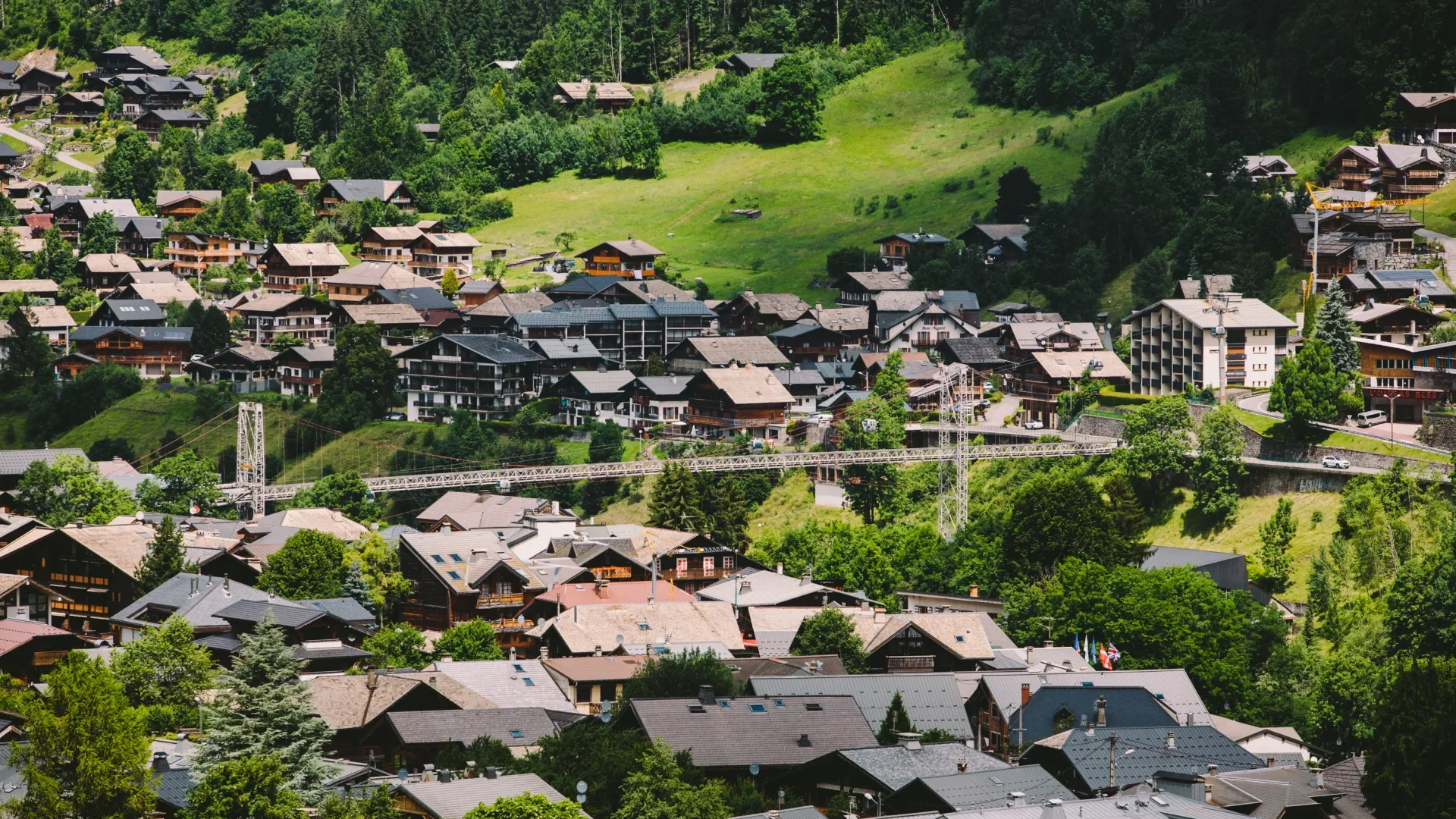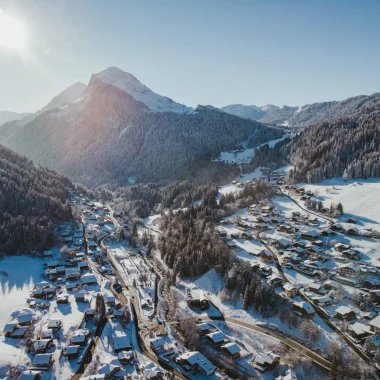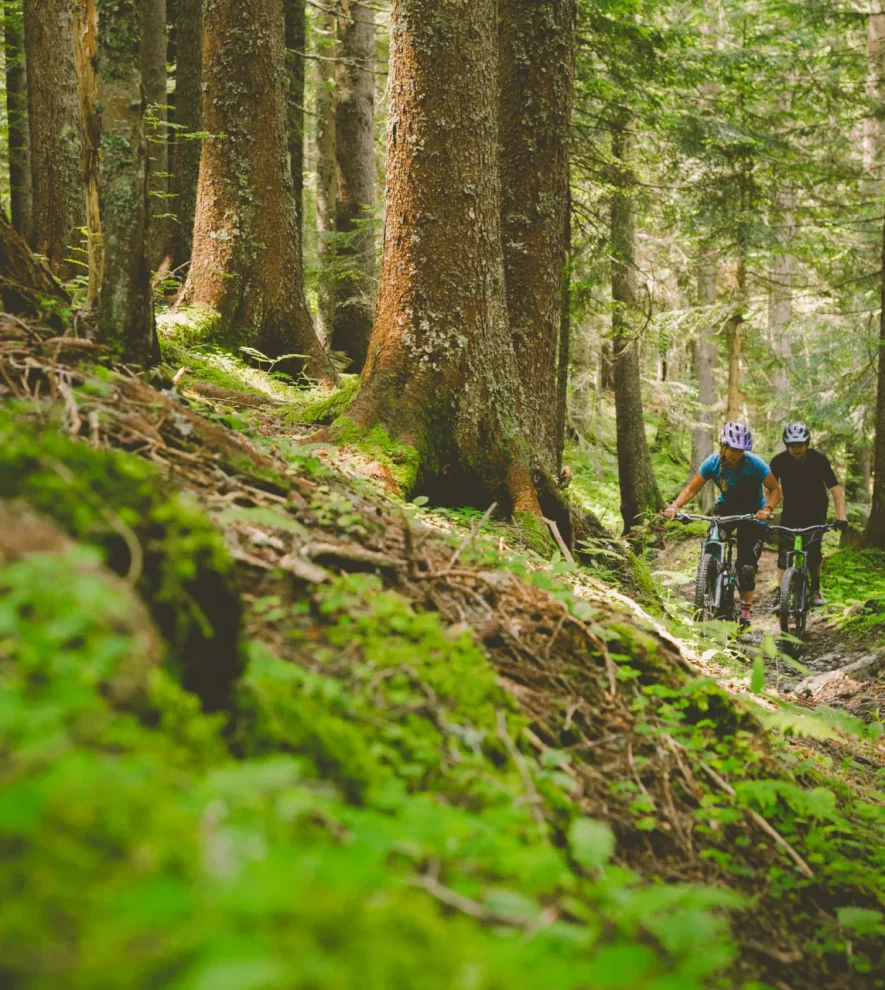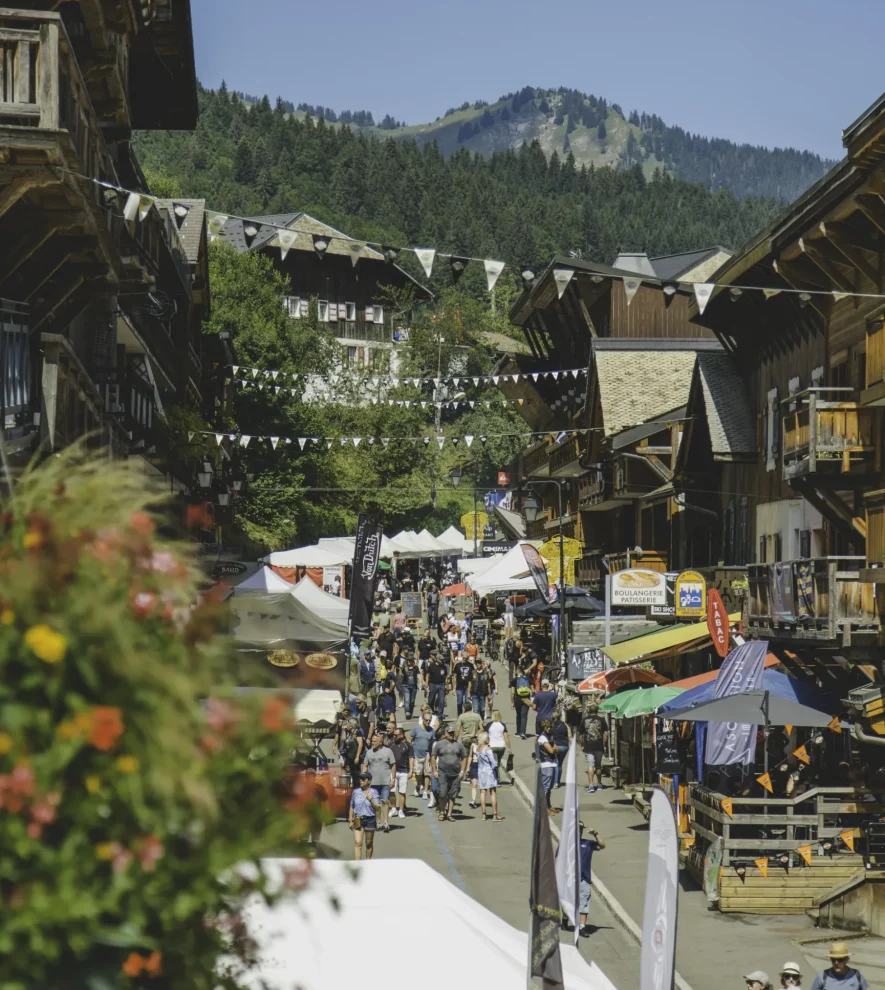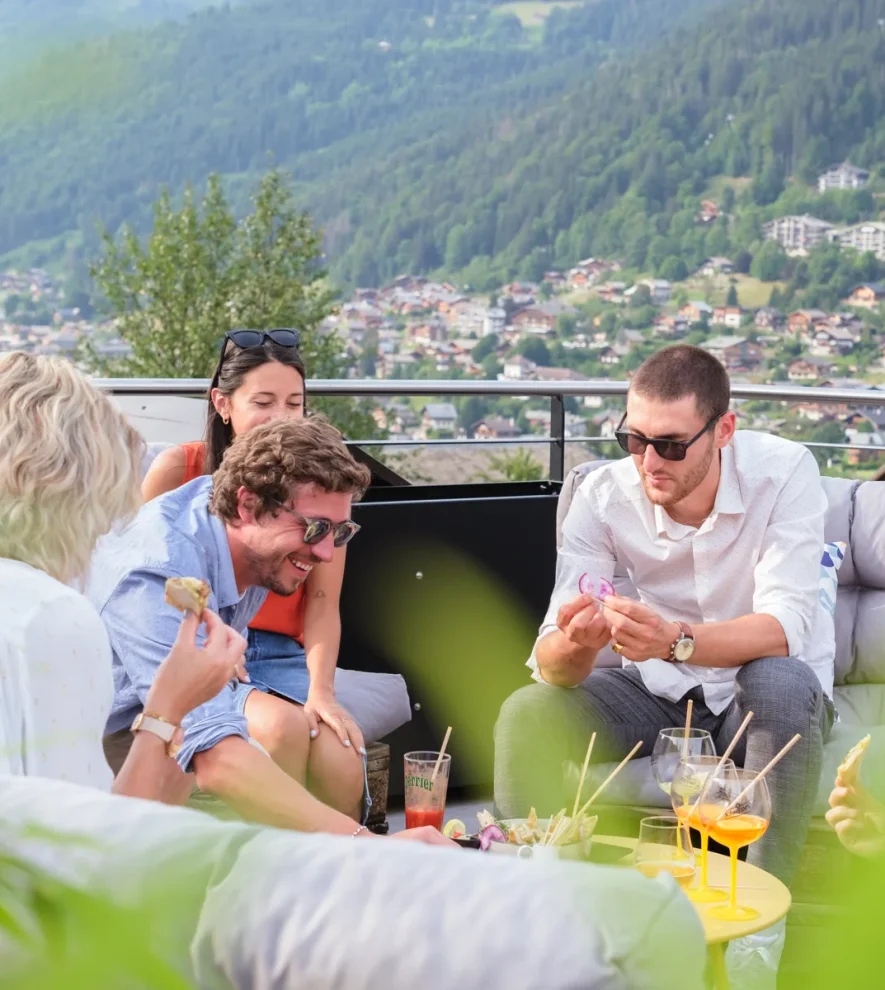The village of Morzine oozes with a charm you’ll find nowhere else. Its houses and chalets have retained the architectural features of the olden days and the central square with all its shops remains the beating heart of the village.
In 1900, Morzine was renowned for slate mining as the surrounding area is dotted with schist quarries. At the time, some two hundred slate miners worked here, mainly between November and May. With the growth of tourism in Morzine, the mining activity gradually came to a stop.
Morzine, the timeless way of life in the mountains
In 1934, when the Pléney cable car began operating, nobody imagined that the typical Savoie village of Morzine would retain so much charm for decades to come. Amid the timber, slate-roofed houses of this warm and friendly resort, the locals welcome visitors with open arms in a subtle mix of tradition and innovation. The mountain way of life awaits you at this winter destination surrounded by unspoilt nature, between forests and alpine pastures.
Check out Morzine heritage in the fact sheets below. Learn more about the history of Morzine through the village’s iconic sites, such as the old bridge the manor house or the slate mines.
No. 1 Village Square

Here you are at the village square, also known as “Vieux Bourg” (literally, “old village”). This history-steeped square is surrounded by a number of Morzine’s important historical monuments, including the town hall building, the church, the old post office, the war memorial, the old bridge, the market building, the Hôtel des Alpes and other buildings of typical Savoie style.
The war memorial: following the war of 1914-1918, war memorials were installed in many villages. The one chosen for Morzine is called “Soldier singing on his way to the front”. The iron statue, cast in core sand, is the copy of an original sculpture by Charles Edouard Richelieu (1868-1945). Inaugurated on 2 October 1921, the monument features the names of 61 soldiers.
Source: Morzine “Histoire et Patrimoine” Association
Heritage Tours every Thursday at 10am during the holiday season
No. 2 The Bézières
The “bézières”, which have now disappeared, were wooden channels installed on posts to supply water to local mills and sawmills.
The photo shows two of these channels, the river and the back of the town hall. These channels required constant maintenance and a huge quantity of timber to carry water across the uneven terrain, withstanding the force of the water as it flowed around the bends.
Source: Morzine “Histoire et Patrimoine” Association
Heritage Tours every Thursday at 10am during the holiday season
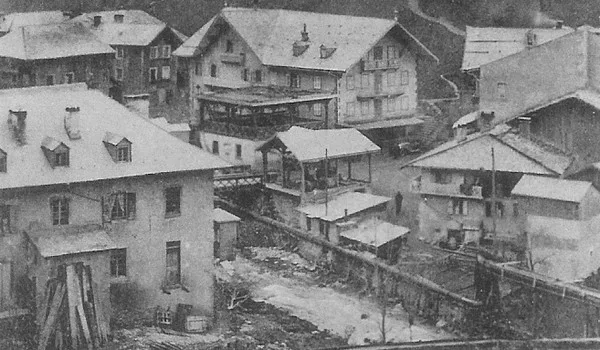
No. 3 The Mills
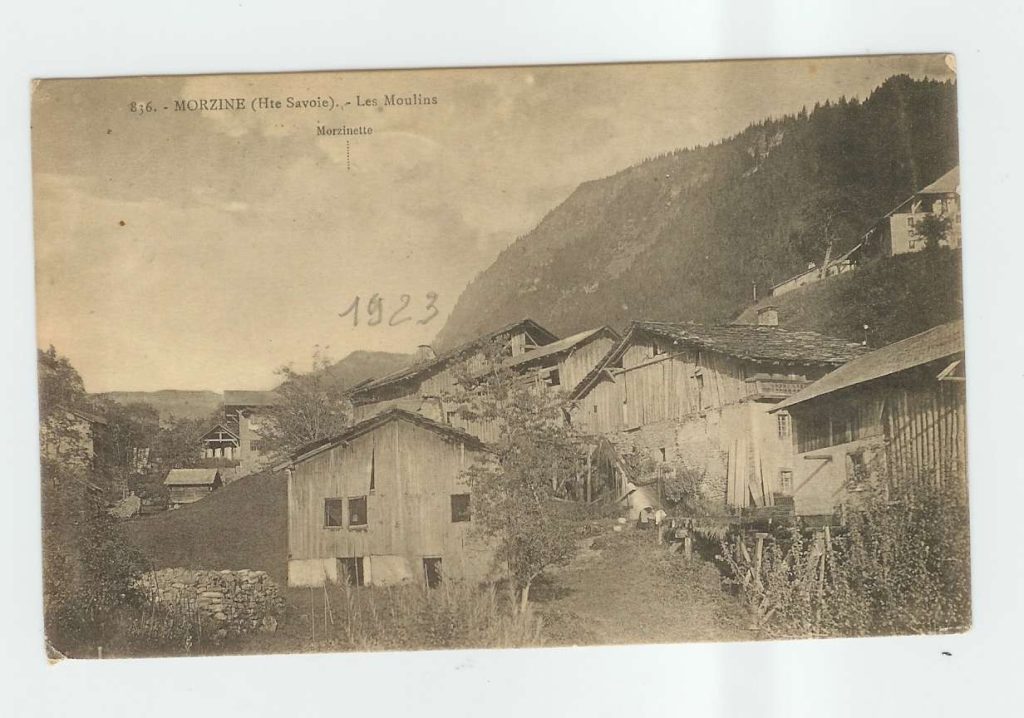
This district was once called “Le Village des Moulins” (the watermill village), as a canal used to flow through it to supply a succession of 6 waterwheels.
Great care was taken to ensure that these wooden waterwheels fully harnessed the water flow, which constantly varied with the seasons, rising during storms and decreasing when the level was low. A watermill, now dismantled, used to stand behind the sawmill, providing the power it needed to operate.
This was also the case for various other mills, including flour mills, oil mills, hammer mills, hemp threshers, etc.
No. 4 The Hotel des Alpes
A few hotels had been here for a long time even before the development of tourism. These included the Hôtel des Voyageurs and the Hôtel des Alpes, the most ancient, built in 1809. Travellers and passing merchants used to stay here. This building has been converted into holiday flats.
The first holidaymakers, travellers and people taking the waters came to Morzine after the First World War. They came mostly in summer to take a break in the great outdoors. Winter tourism began in the 1920s with the first skiers, and increased with the construction of the Pleney cable car in 1934.
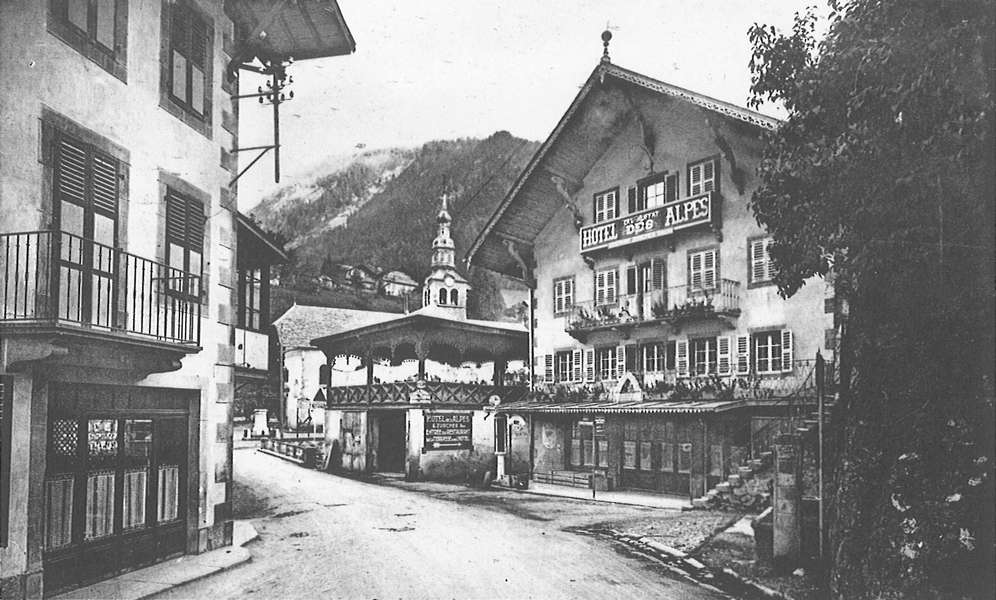
No. 5 Le Clos
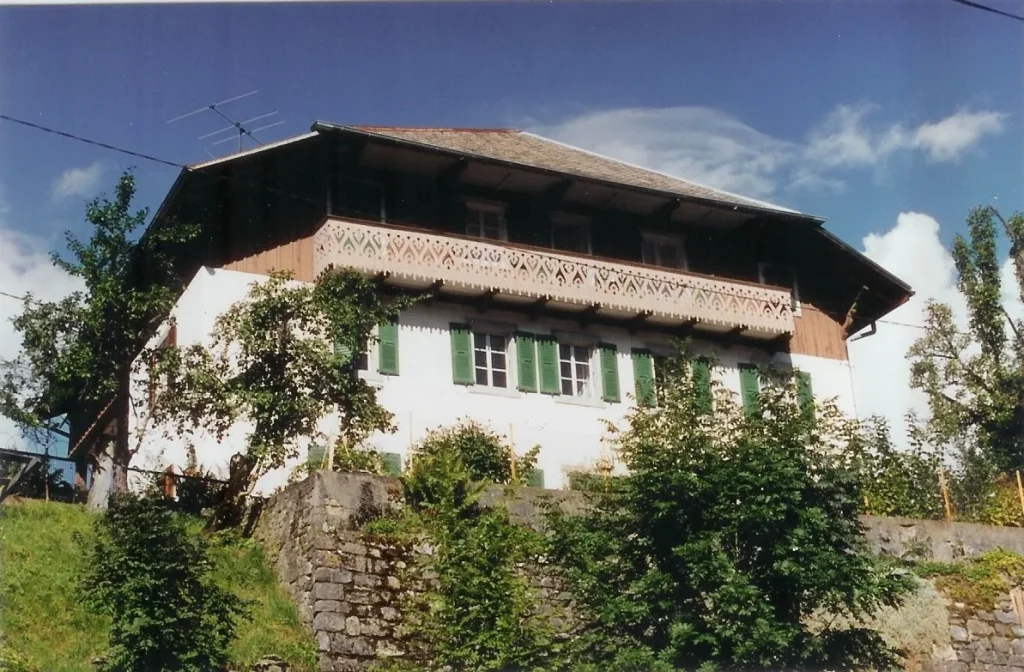
The painter and sculptor, Laurent Baud, used to live in this house. His workshop on Chemin de la Coutettaz remains the symbol of this family of great artists; his father was a sculptor and his brother taught drawing and painting. Laurent, who was King Charles Albert’s best portrait artist, left behind a tremendous legacy of drawings, paintings, frescoes and sculptures.
No. 6 Post Office House
This building on the Route des Udrezants has housed the village post office, a butcher’s shop and a bistro. Not far from the town hall and church, it was a hotspot of the local community.
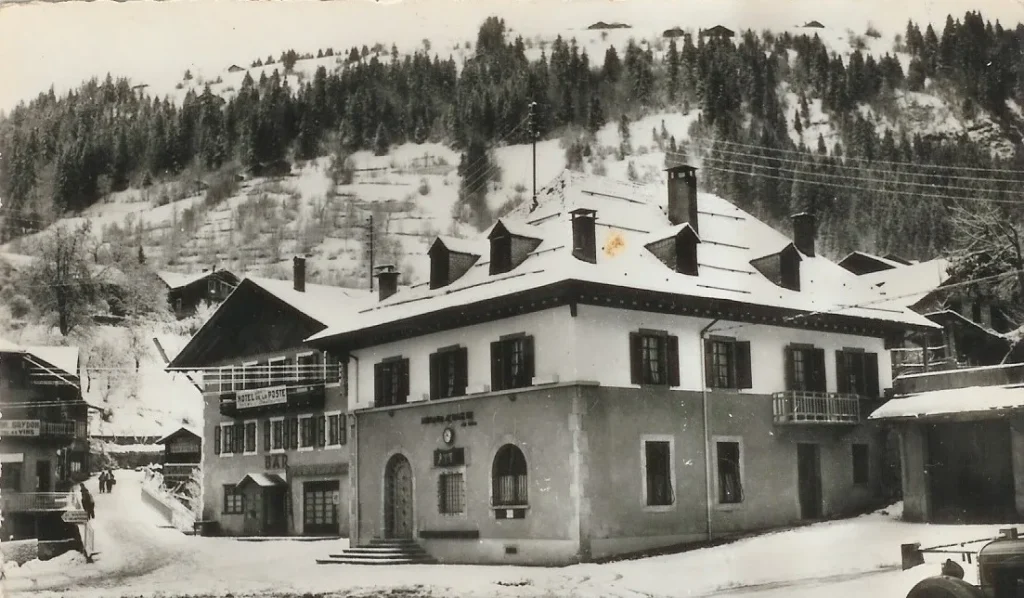
No. 7 The Old Bridge
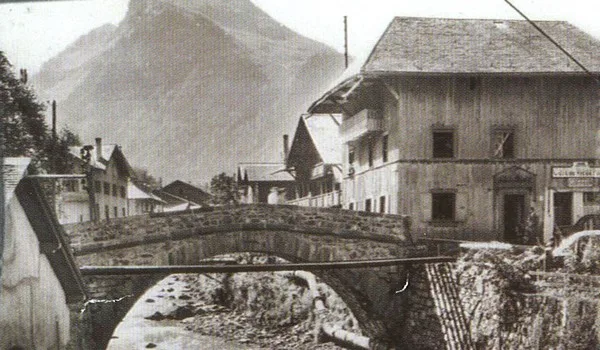
The original bridge was built of wood, straddling the river Dranse as the main link between its two banks.
Alongside it was a second wooden bridge with a roof, which was used as a market hall.
In the 1720s it was decided to build a stronger bridge capable of resisting the regular rises in the river level that had destroyed the previous bridges. The construction site was swept away in 1725 when the river burst its banks yet again. The new bridge finally went into service in 1729.
The parallel, covered bridge, in a state of disrepair, was destroyed in 1957.
No. 8 The Dranse
This name of Celtic origin is thought to mean “water that runs” fiercely, rapidly.
The Dranse de Morzine takes its source at the French-Swiss border, below the Bostan Pass in the Terres Maudites region.
A road runs for 30 km alongside it, through the entire valley.
Whenever the Dranse de Morzine burst it banks, it caused significant damage throughout the valley and the various bridges that straddled it were destroyed many times. To protect the houses, stone walls were built across the village.
But this mountain river was also a life source and a precious asset to the local economy, as its power was harnessed to drive flour mills, oil mills, saw mills, hammer mills, hemp threshers and other machinery.
The timber building in the foreground, on the right, is a foundry. In the background are the few houses of La Salle village and a deforested, completely untouched hillside set aside for farming activities.
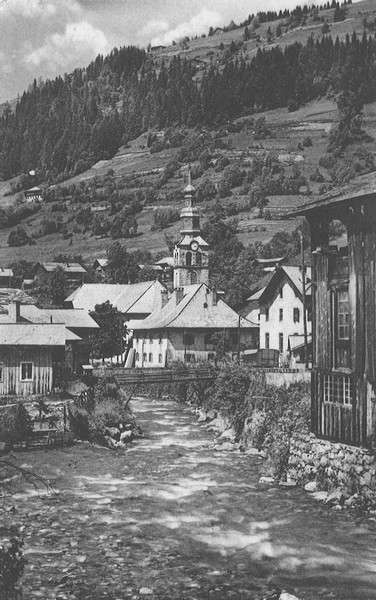
No. 9 The Plan Neighborhood
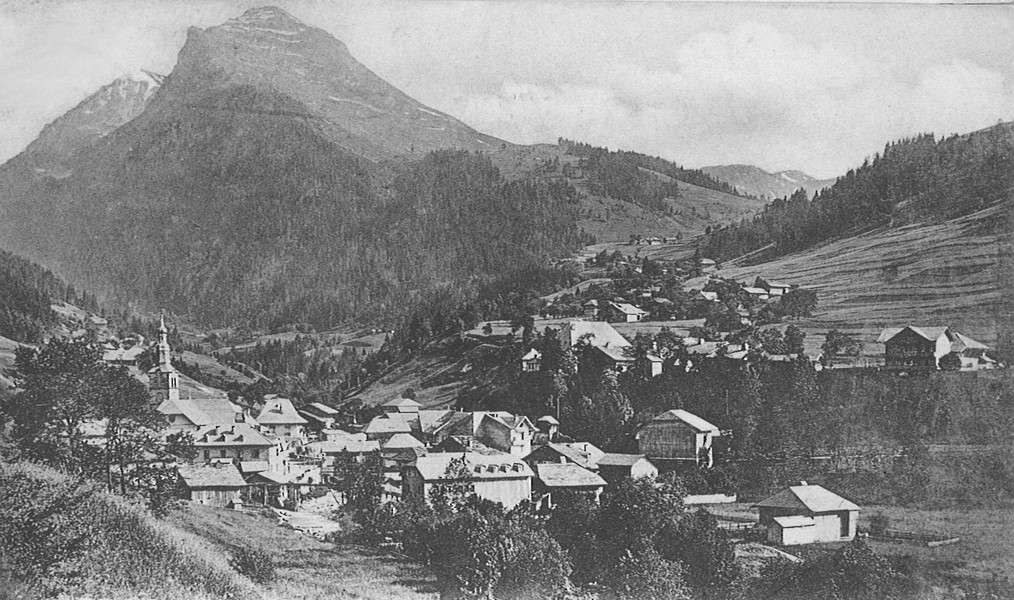
This area in the heart of the village was once deemed to be a worthless wetland that could not be cultivated, prone to flooding and with grass of quality too poor to graze animals.
By virtue of its situation, it developed into a key district, home to the police station (1958), the swimming pool (1970), the sports centre (1976) and the post office (1984).
No. 10 The Old Cable Car
This ski lift with 28 pylons and 94 gondolas, each carrying 2 people, was installed in 1952. It stopped running abruptly in 1964 due to fire damage. The old lift had been purchased through a private initiative to equip this mountainside, paving the way to the opening of a new ski area extending towards Avoriaz.
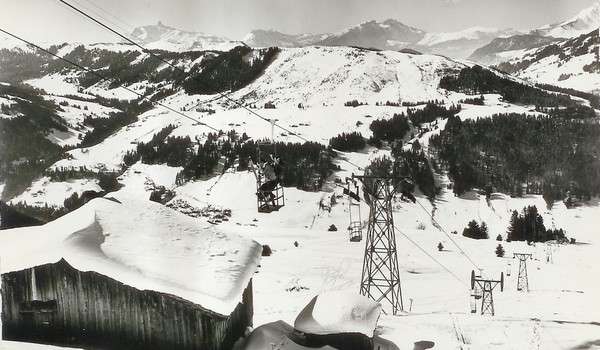
No. 11 The Old Villages
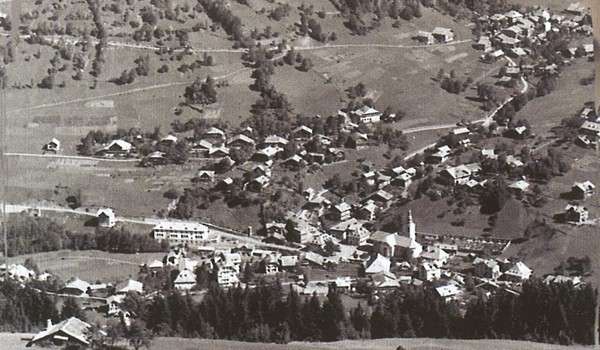
This overview image of the right bank, taken in 1935, clearly shows separate, distinct villages. La Salle, Les Udrezants, Le Bourg.
The upper area features the very first metalled track leading towards Avoriaz. It went as far as the Maisons de Zore.
No. 12 Avoriaz
“Avoriaz” derives from “Evorée”, the name of the vast mountain pasture that was here before Avoriaz grew into a world-class ski resort.
A local man named Jean Vuarnet (Olympic champion at the Squaw Valley Games) was the pioneer behind the creation of Avoriaz.
The project was launched in the sixties and the resort opened in 1966.
The car-free resort placed the focus on skiing, as buildings emerged and gave shape to a village of somewhat original architecture.
With direct access from Morzine via the Prodains cable car, the ski slopes of Avoriaz, added to those of the Pleney and Nyon sectors, significantly increased Morzine’s tourism capacity.

No. 13 The Avoriaz Cable Car
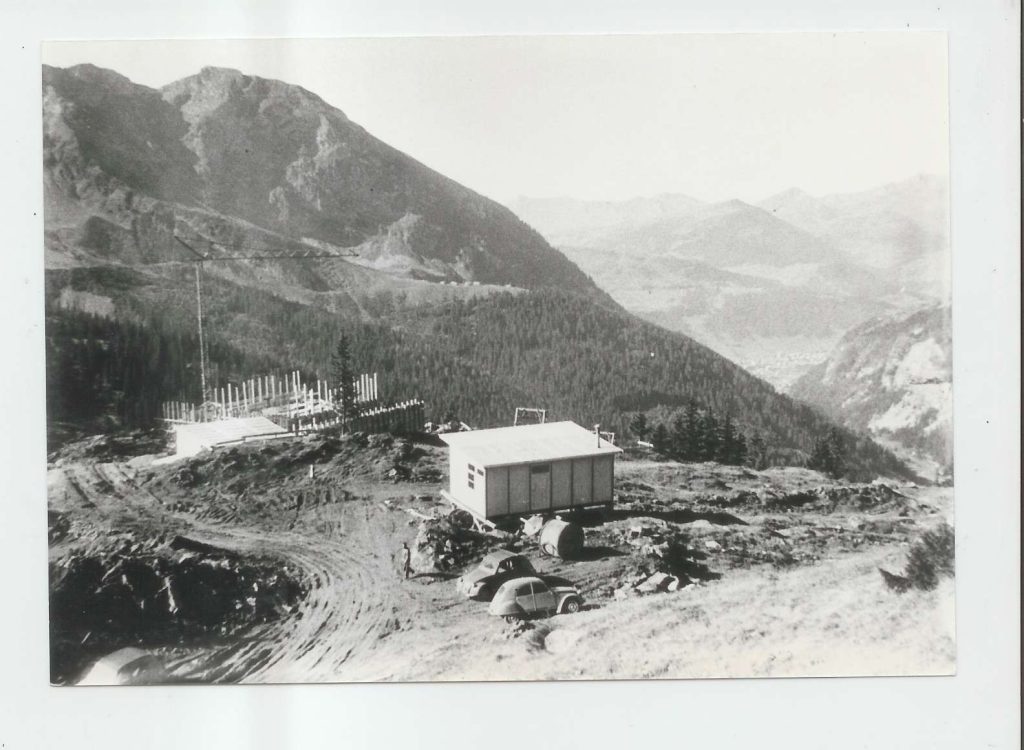
The Avoriaz cable car opened on 17 March 1963, carrying up to 80 people per cabin between Avoriaz and Morzine at the rate of 1,000 passengers per hour. In its day, it was the fastest cable car in the world (1966).
It was replaced by the current cable car at the end of the winter of 2012/2013 and remains even today at the cutting edge of cable car technology.
No. 14 The Udrezants
Les Udrezants is one of many districts of Morzine that were formerly considered as distinct villages.
Opposite: the chapel, built between 1846 and 1847 by the parish priest, Antoine Marullaz (1805-1877) and dedicated to the Virgin Mary. He took command of the forest above the chapel in order to safeguard the village.
The homes of public figures, sometimes known as “Châteaux” in Morzine can also be seen here:
– The château with a sundial belonged to the family of François Buet, who was mayor from 1888 to 1931.
– The Château des Udrezants (1853) is another bourgeois home of that era.
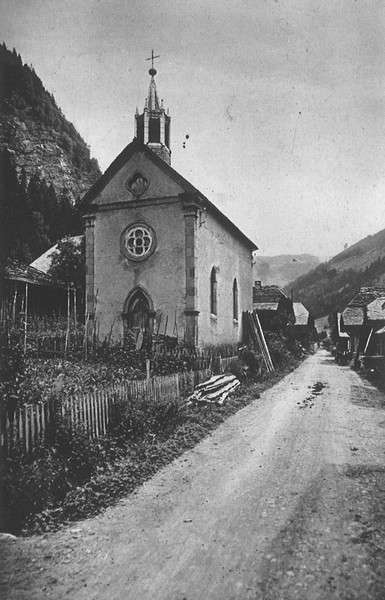
N°15 Téléphérique de Nyon
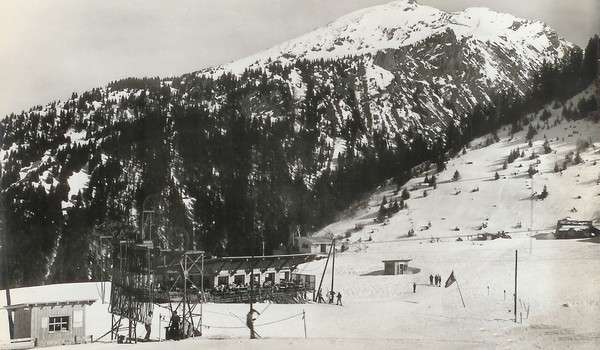
This ski lift was installed at the initiative of the people of Morzine, to allow skiers to reach the slopes of the Nyon sector (1960). Over the years, other lifts were added to connect these mountains to the Pleney sector and the resort of Les Gets.
No. 16 Village des Nants
Surrounded by trees, this village (1910) huddled away from the centre of Morzine was traversed by the route that would be taken by the future Joux Plane Pass. The forest stood high on the slope, leaving space for farmland. A keen eye can make out the farm tracks between the horizontal plots of roughly a hundred metres in length.
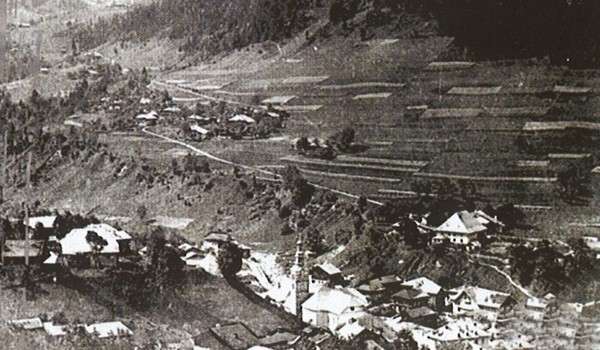
No. 17 The Manor
The Manor House, or “Château” dates from 1791.
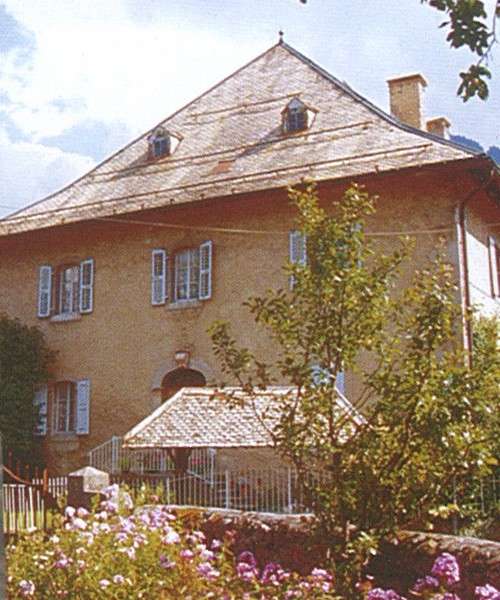
No. 18 Le Bourg
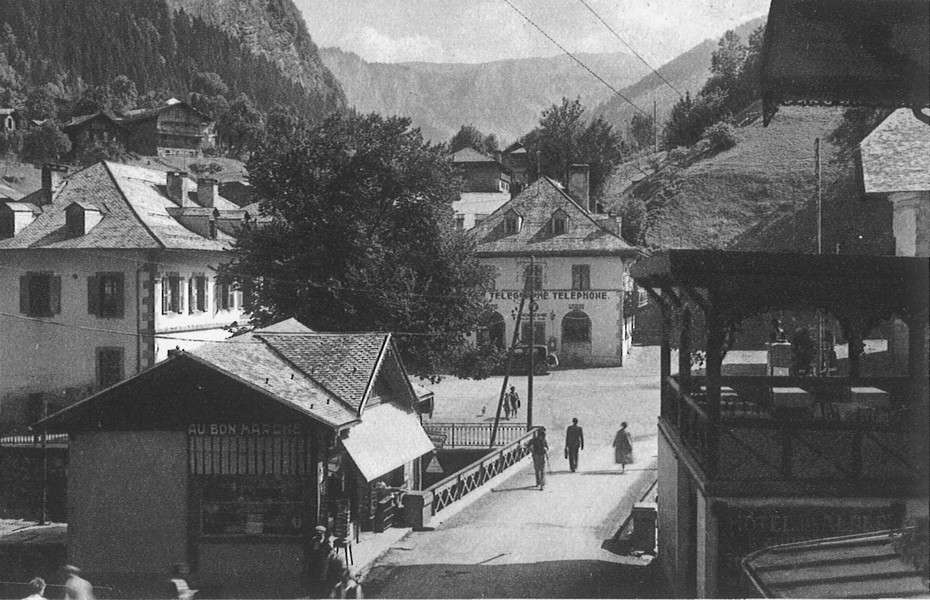
The old village centre comprises the town hall, a church, a museum, a war memorial and other buildings. This is where you’ll find the village square (cf. Fact sheet No. 1 “Village Square”).
No. 19 The Pleney Cable Car
Built on the initiative of the Morzine residents, who borrowed the necessary funds, this installation embodies the pioneering spirit of the village. In 1934 it was the second creation of its kind in France, following that of Chamonix. Constantly updated, it carries skiers to slopes that are equipped with snow cannons.
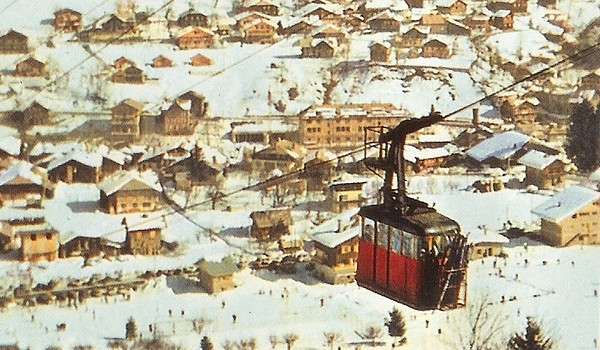
No. 20 The Grand Hotel
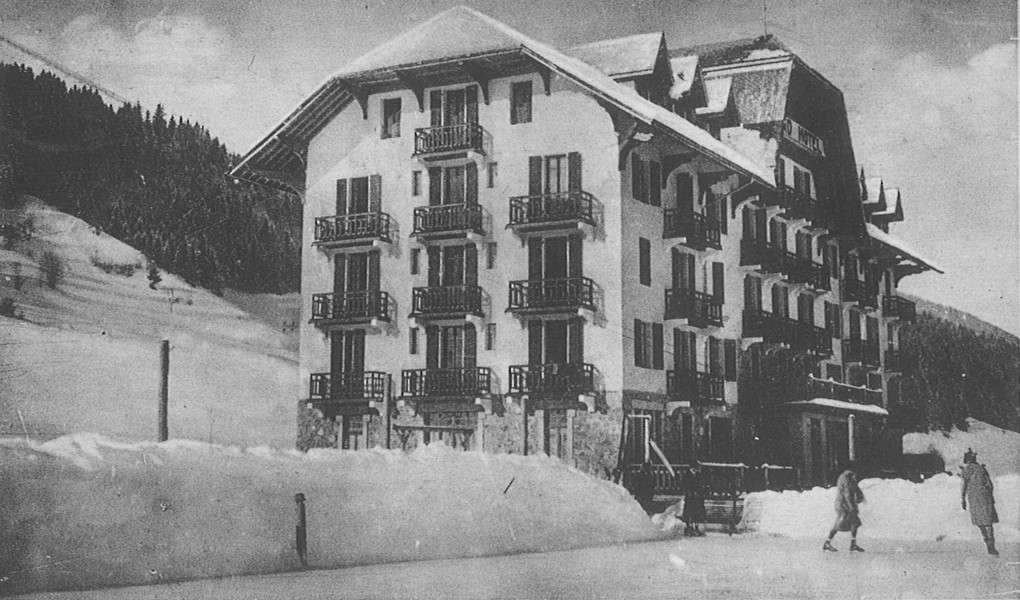
Built in the 1920s, the Grand Hôtel was a real growth lever for the resort, mainly thanks to its capacity: 70 rooms spread across 4 floors, set amid the meadows. It opened in 1925 and quickly became a trendy venue that attracted an elite clientele, including a host of personalities, even before the ski lifts were built (Pleney in 1934: link to the article on Le Pleney). In 1965, the Grand Hotel became the property of the Caisse d’Allocations Familiales de la Sarthe and was later renamed the Résidence l’Hauturière.
Source: Morzine “Histoire et Patrimoine” Association
Heritage Tours every Thursday at 10am during the holiday season
No. 21 The Plan Sawmill
This was the last sawmill in operation (…), with a turbine run by the driving force of water. Planks and beams were produced by 14 sash sawmills in the 19th century. The first turbine to replace the millwheel dates from the early 20th century. In the interests of heritage conservation, a reconstruction of a sash sawmill featuring the original machinery can be seen on the Dranse riverbank in the Dérèches Park.
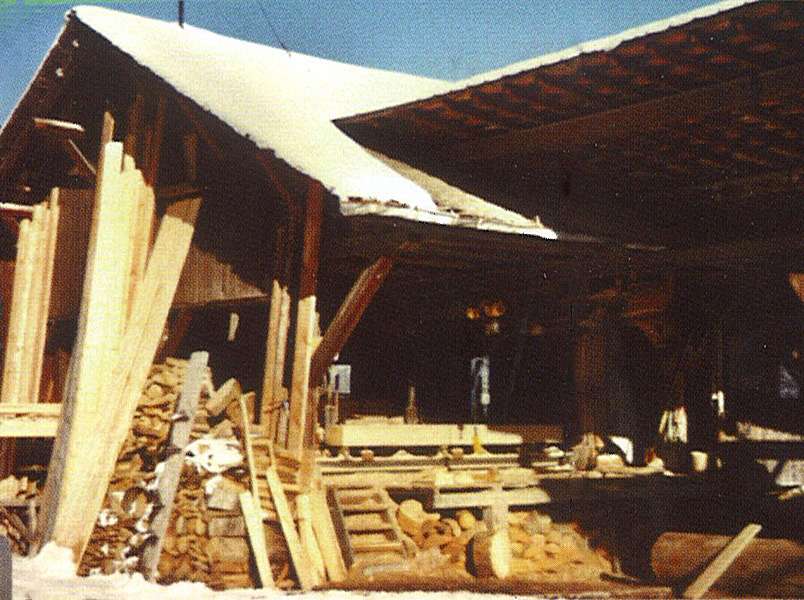
No. 22 The Slate Mines
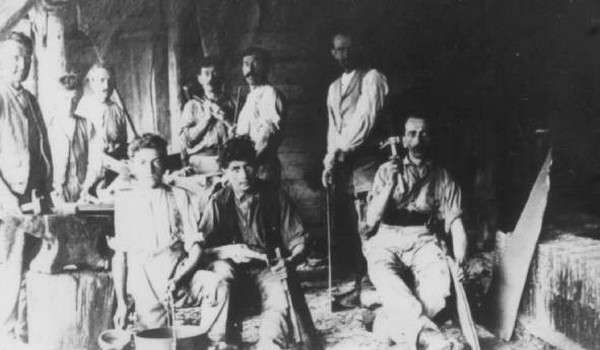
The mountainsides of the slate-mine valley features thin layers of slate formed over millions of years from compressed rock. The local people quickly learned to use this rock to roof their houses, as it was easy to split into neat slates. The church was the first building to be covered with a slate roof. Blocks of slate were ripped from the bottom of galleries carved into the rock, then transported to the mouth to be split and cut into pieces of varying size. This activity continues even today, adapting to new markets for decorative and other purposes.
No. 23 The Combe à Zorre
In the foreground, the Grand Hôtel surrounded by fields. At the bottom right, the first signs of the road to Les Gets can be seen. The land now occupied by the Tourist Office and the square are completely untouched.
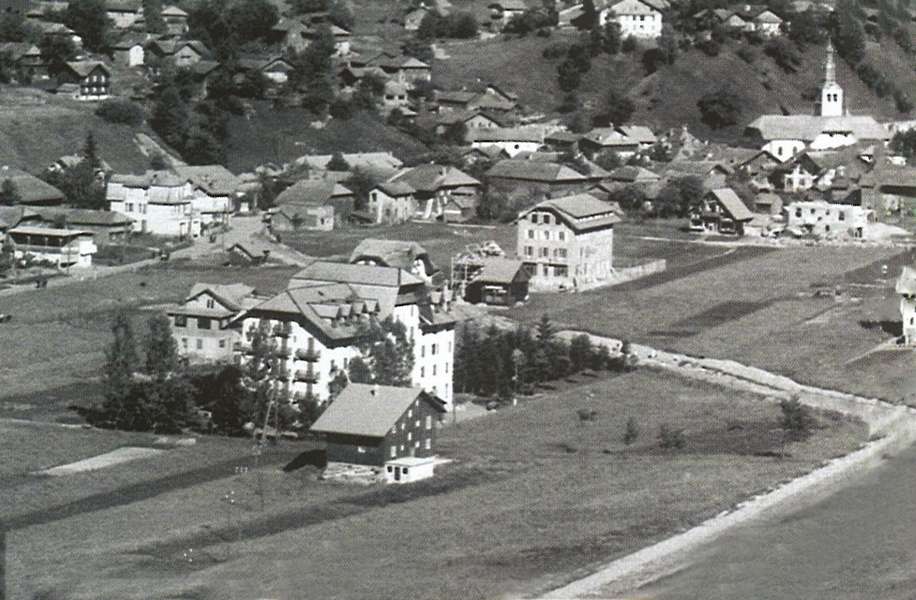
No. 24 The Two Basins
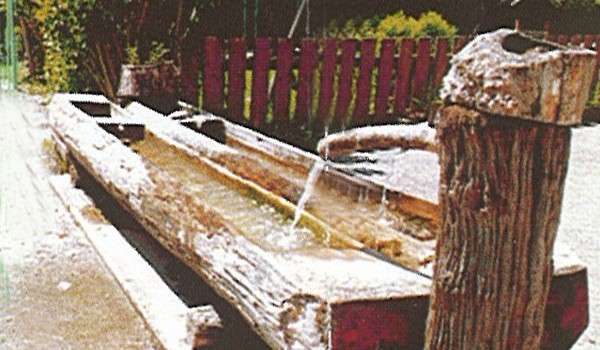
Water flowed in abundance, and there were a number of reservoirs in the village. Used by both residents and animals, they were places where people would get together. The wood was carefully selected to avoid it rotting too quickly, and carved out by hand.
No. 25 The Foot of Plagne
The Pied de la Plagne Chapel was built between 1806 and 1808 by Antoine Plagnat, and dedicated to Saint Bridget of Sweden for her mystical revelations. Each village had its own communal oven, used mainly for bread, which was fired up just once a month in order to save firewood, or once a fortnight when production required. Nowadays, these popular sites remain lively hotspots during local festivities.
